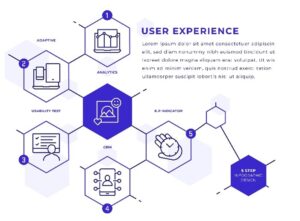DELIVERING BETTER CUSTOMER EXPERIENCE
 |
BLOGBy Rhys Madoc, CEO, UHY International January 2024 |
In 2024, every business needs a digital strategy. That is not the same as having a website and email address. It is about using digital processes, not only throughout your business but also, and perhaps most importantly, in the continual quest to improve customer experience, satisfaction and loyalty.

Like everyone else, business people live their lives in a world of apps and instant access. As consumers, they self-serve using banking apps, download train or concert tickets to digital wallets, and interact with brands via AI-powered chatbots. While they might not expect quite the same level of convenience and accessibility at work just yet, the gap between business experience and consumer experience is closing fast.
Increasingly, our member firms’ clients, for example, expect digital communication channels, self-serve options and cloud-based accounts they can access from anywhere. They want the service they receive in a virtual world to be as seamless and professional as the one they receive in its physical equivalent.
WHAT IS DIGITAL CLIENT EXPERIENCE?
A good digital experience offers clients easy, intuitive routes to the information or services they seek. On one hand, that might be something as simple as making sure web pages and blogs link to the most relevant and up to date sources. On the other, it might mean offering clients self-serve account options, allowing them to pay bills or alter account details without having to pick up the phone.
Self-serve is increasingly popular in business-to-business (B2B) settings. A 2021 Gartner survey found that 43% of B2B customers would prefer to not interact with a salesperson at all. They want an entirely digital, self-serve process.
 With that in mind, the digital experience you offer needs to be both comprehensive and tailored to your own unique circumstances. For some, better client experiences might come from a cleaner, more logical website layout, while for others they may come from omnichannel communications (integrated email, instant message, chat and voice services). Or they may come from offering a simple and secure digital document repository.
With that in mind, the digital experience you offer needs to be both comprehensive and tailored to your own unique circumstances. For some, better client experiences might come from a cleaner, more logical website layout, while for others they may come from omnichannel communications (integrated email, instant message, chat and voice services). Or they may come from offering a simple and secure digital document repository.
Good digital plans can also have positive impacts in unforeseen ways. For example, when initiatives remove tedious and repetitive tasks from an employee’s day, it gives them more time to spend on higher value work, which might include forging better relationships with clients.
DIGITAL EXPERIENCE REQUIRE CONSISTENT STRATEGIES
It is clear that digital innovation for better client experience has to touch every part of your organisation, integrating tools and information flows across teams and departments. This is why digital transformation should be driven by an overarching strategy. The ad hoc implementation of digital tools across an organisation can lead to information silos, fragmented services, and ultimately frustrated clients.
 A seamless digital experience requires consistency around planning, implementation and operation. Digital innovation might be led by IT professionals, but it must be championed by committed leaders across the business. Employee education and training is essential. If you are giving clients digital options, colleagues have to know how to use the relevant tools, as well as understanding the benefits and implications for their own roles and workflows.
A seamless digital experience requires consistency around planning, implementation and operation. Digital innovation might be led by IT professionals, but it must be championed by committed leaders across the business. Employee education and training is essential. If you are giving clients digital options, colleagues have to know how to use the relevant tools, as well as understanding the benefits and implications for their own roles and workflows.
This leads us to consider that a digital strategy is a journey rather than a destination. Technology does not stand still. If you offer a digital experience (and you should) clients will expect you to keep up-to-date. For example, artificial intelligence (AI) can offer clients more personalised and customised services. If you are not looking into the potential of AI in your business now, you probably should be soon. It is important to explore new ways to regularly innovate and improve the digital experience – and reach new customers.
DIGITAL IS INTEGRAL TO THE WAY BUSINESS HAPPENS TODAY
Having said all of this, digital strategies are not one-size-fits-all. Some markets are more digitally advanced than others. Expectations may differ from region to region, or from one industry to the next. Businesses need to pick the best-fit digital strategy for their resources and circumstances.
The crucial point is that everyone should be doing something and doing it with a clear vision. In my profession, our member firms and their clients increasingly expect smooth and seamless digital experiences, and many prefer to interact virtually, at least some of the time. Whatever the details of your own digital strategy, the key is to commit to it wholeheartedly. Digital is not a bolt-on or a nice-to-have anymore. It is integral to the way business happens today.
1Source:Gartner Keynote: ‘B2B Sales Must Focus on Seller-Assisted Digital Experiences’
Image credits:
Colleagues: Mizuno K – Pexels
User experience: iStock – StudioU
Transactions: Yan Krukau – Pexels


